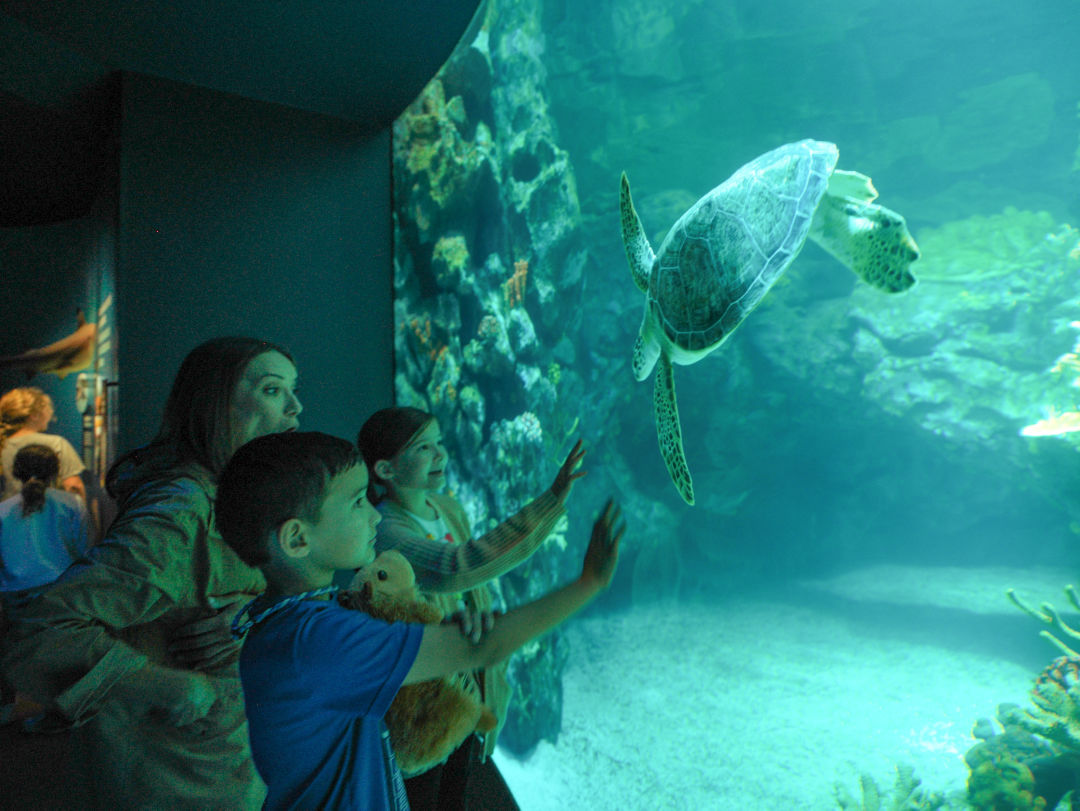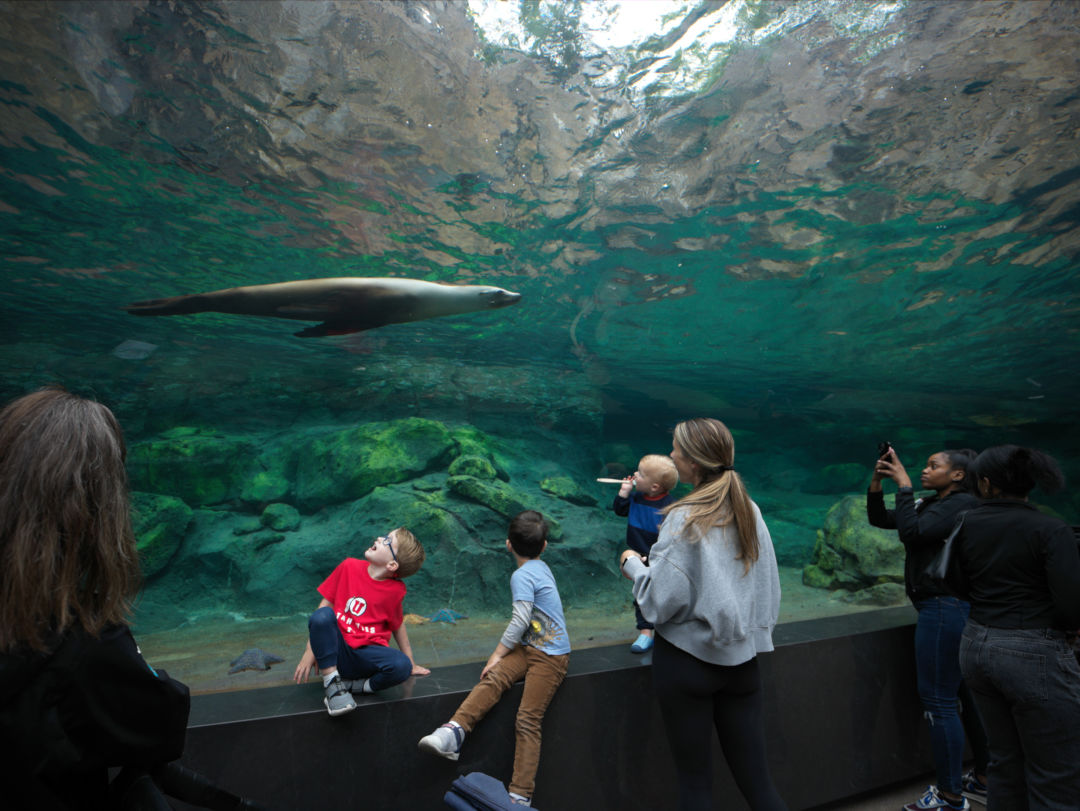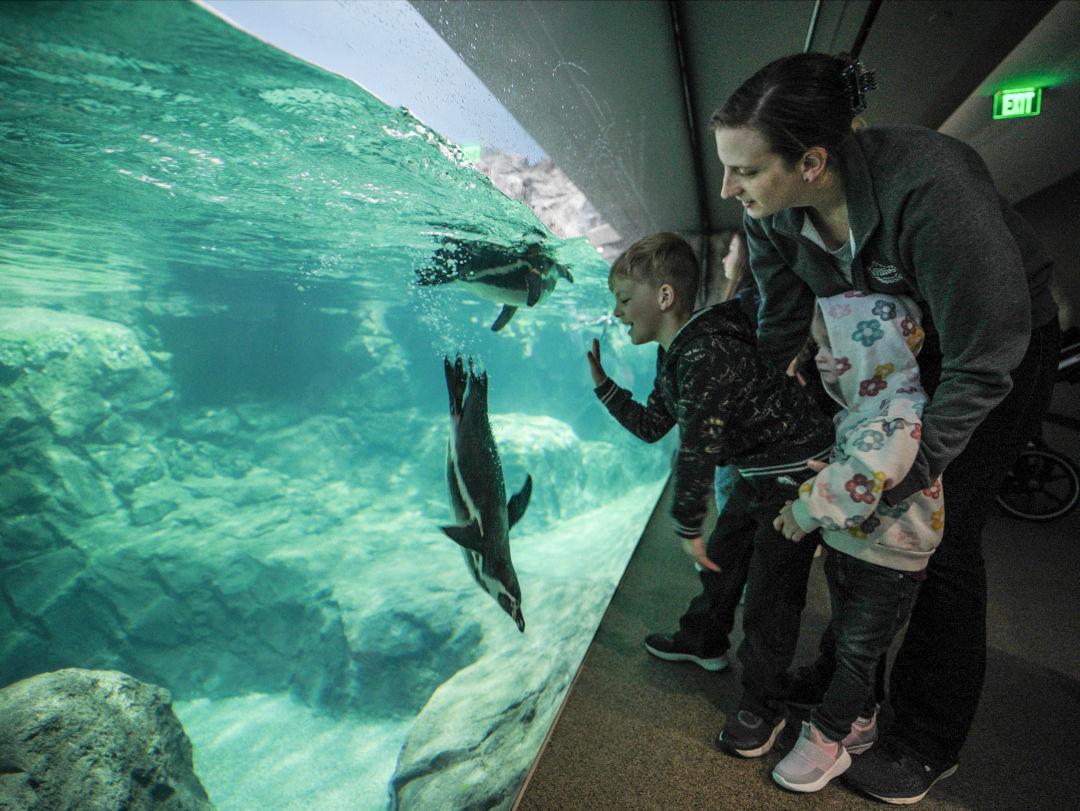Houston Zoo’s New Galápagos Islands Exhibit Is All about Conservation

Image: Daniel Ortiz
The Houston Zoo’s highly anticipated Galápagos Islands exhibit has finally opened. If you’re active on social media, it seems that everyone (and we mean everyone) has already snapped a selfie in that shiny new acrylic sea lion tunnel. The massive (and, yes, photogenic) project—a celebration of the Zoo’s centennial anniversary—is the first major conservation-based zoo exhibit in the world to focus on the Galápagos Islands.
Located off the coast of Ecuador, this storied volcanic archipelago animal sanctuary, which once sparked Charles Darwin’s writings on evolution, continues to enchant the global community with its collection of exotic flora and fauna, including giant tortoises, playful sea lions, and warm-weather penguins.
Although protected by a litany of governmental laws and regulations, the delicate ecosystem of the Galápagos Islands still finds itself under existential threat. These days, more from manmade pollutants than any natural predator, as the strong currents surrounding the islands consistently wash tons of plastic waste on shore. This can lead to entanglement, choking, and additional hazards that threaten the various and delicate animal populations. For the Houston Zoo, the new exhibit provides an opportunity to educate visitors about the importance of ecological conservation and the harmful impact of human waste at home and around the world.

Two acrylic tunnels connected to the zoo's 250,000-gallon sea lion environment give visitors close access to the famously playful animals.
Image: Daniel Ortiz
“When you’re separated from the ocean, you don’t feel that it matters what you do, that it doesn’t impact something you get to visit or see on a daily basis,” says Krista Webber, the Zoo’s supervisor for sea lions and penguins. “But it very much does.... We’re all connected to an ocean.”
Two California sea lions, Gaia (who lost sight in one eye as the result of fishing wire entanglement) and Calypso (a survivor of red tide, a toxic algal bloom that kills most sea lions) were chosen as ambassador animals by proxy, since Galápagos sea lions are under governmental protection, and now make their home in 250,000 gallons of clean water, complete with a wave machine and two tunnels for exploration and enrichment. One of the tunnels allows visitors to pass through, surrounded on all sides by the enclosure. It's as entertaining to the sea lions as it is to us.

The Zoo's Humboldt penguins serve as stand-ins for their close Galápagos counterparts.
Image: Daniel Ortiz
Galápagos wildlife is known for being friendly and open to humans since the islands lack any major indigenous predators, and the animals have never felt threatened. Houston Zoo places that innate outgoing nature front and center to build on the exhibit’s overarching theme of “Shared Ocean.” The tortoises, which still have yet to grow into their final half-ton form, don’t tuck their heads inside their shells even with an eager crowd chattering loudly ahead. Instead, they swivel their heads around curiously to soak up welcome new stimuli.
In the Humboldt penguin habitat, the birds glide underwater in a manner penguin keeper Amanda Perry likens to “little torpedoes.” They flit up to the glass of their enclosure—shielded from the outside to better allow for temperature control and protection against mosquitoes—to interact with guests, only to dart away and return once more. Good luck capturing one with a standard smartphone camera, though. These diminutive dynamos can swim up to 30 mph.
As with the sea lions, the Humboldt penguins serve as stand-ins for their close Galápagos counterparts. Yet they still tell the complex story of a rich ecosystem at once entangled and in peril. Zoo staff hope these intimate encounters will inspire visitors to take some manner of action toward tangible ecological change. As tortoise keeper Melissa Hodges points out, "There’s a whole world of animals out there. Do some research and read up on them.”




